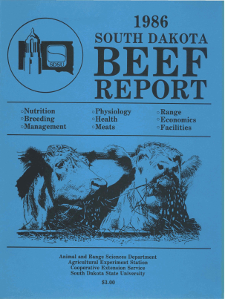
South Dakota Beef Report, 1986
Document Type
Report
Report Number
86-32
Publication Date
1986
Keywords
cow, cull, price, feed, gain
Summary
The seasonal price pattern exhibited in the South Dakota cull cow market is one of low prices in the fall when most culling is done with increasing prices well into the following year. This pattern supports the assertion that cattle producers may improve profitability of their operations by feeding cull cows for several months rather than selling immediately at culling time. A dynamic programming model was used to determine the optimal strategy for marketing cull cows in South Dakota. The model systematically evaluated the sell now versus the hold and maintain or feed for gain strategies of the producer. Results of the research support the hypothesis that cull cows should be retained and fed under certain circumstances. If cow weight was light and price was low at culling time, the optimal strategy was to feed. If cow weight was heavy and price was low, the optimal strategy was to feed for maintenance and take advantage of expected price increases. The optimal decision concerning length of time in the feedlot was to feed from November (culling time) through April for most price-weight combinations. However, potential added profits above selling in March were near zero and feeding beyond 120 to 150 days was not practical. The optimal rate of gain for most decisions to feed was 1.65 l b per day.
Number of Pages
5
Type
text
Format
application/pdf
Language
en
Publisher
South Dakota State University
Rights
Copyright © 1986 South Dakota State University
Recommended Citation
Shane, Richard and Ellington, Wayne, "Profitability of Feeding Cull Cows" (1986). South Dakota Beef Report, 1986. 33.
https://openprairie.sdstate.edu/sd_beefreport_1986/33

